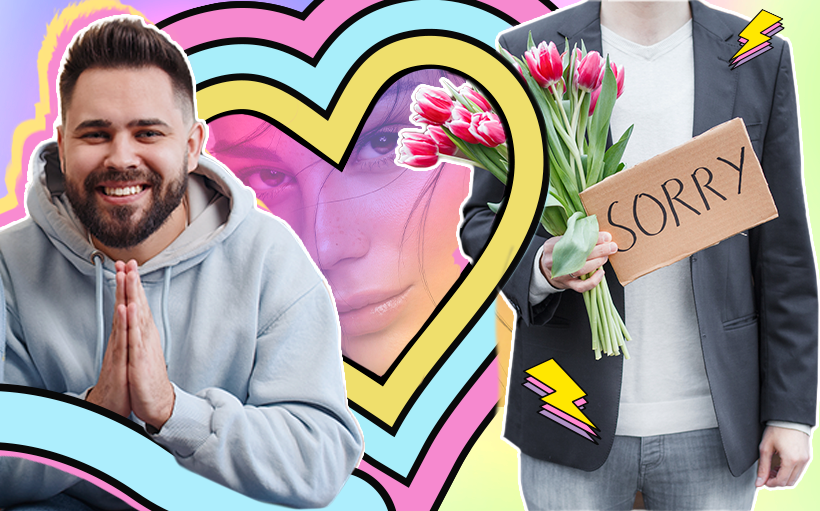I’ve always been inspired by women who are outgoing, very sure of themselves, and not afraid to be who they were, including their sex lives. Under their tutelage, I gradually shed my old self, hung out and socialized with them, and, over time, became the empowered, self-confident, and sexual woman I am today. Happy to share my insights with other women today!
See How Good Your Life Can Be Once You Stop Chasing an Avoidant
Love is complex, and our attachment styles are frequently to blame for messing things up in our romantic relationships. Paradoxically, chronic avoidance is also an attachment – and once you decide to date an avoidant personality, it might be hard to decide how to act: fight for your relationship or let them do what they manifest: go and be gone? In this post, we’ll show you how the bold decision can work out and what happens when you stop chasing an avoidant.
Related reading: Are You In Love or Just Clingy? 8 Love vs Attachment Differences
Attachment Styles: What Are They?
According to psychiatrists John Bowlby and Mary Ainsworth, we all have a certain attachment style. And your adult attachment style is the result of the relationship you have with your primary caregiver at a very young age.
There are four main attachment styles:
- Secure: Stands for the ability to feel safe in romantic relationships, build healthy connections based on mutual trust, and take responsibility for mistakes.
- Anxious: Ambivalent or anxious-preoccupied attachment style is evident in people who are ashamed of their need for love and attention, so they surround love with constant fear and uncertainty.
- Avoidant: Dismissive avoidants cannot tolerate emotional uncertainty and closeness and try to break free from it.
- Disorganized: Disorganized/disoriented attachment results from deep childhood trauma.
One of the toughest styles is the dismissive avoidant attachment style. If you are in a relationship with an avoidant partner and don’t share their attachment style, you have a rocky road ahead of you.

Brief Summary of the Dismissive Avoidant Personality
First, understand that avoidant attachment styles do form at an early age. There may be several scenarios that caused this. A primary caregiver was heavily focused on their career, for example, and that career took precedence over the normal emotional nurturing of the child. Of course, all of the basic needs were met, and that child may have grown up in an affluent environment. And if both parents were focused on their careers and their productivity, the child did not witness a lot of emotional intimacy between their parents either. They came to see this lack of intimacy as normal.
Other primary caregivers are emotionally “unavailable,” not due to careers but to other factors in their lives. But again, the child will grow up to be emotionally distant from others too, relying only upon themselves.
Here are the major traits of the avoidant person:
- Fercely independent and do not feel a need for others
- Withdraw from others who get too close or seem needy (thus often called fearful avoidants)
- Uncomfortable with emotional displays because their own emotions are always under control
- May move from partner to partner, reach tipping points, and break free when a relationship is getting too “heavy” to regain their sense of freedom
- Often prefer casual relationships and choose partners who are as independent as they are.
- Ignore the feelings of their partner
- Set boundaries on relationships that are strict with lines not to be crossed on emotional intimacy
- Rarely feel lonely when not in a relationship because they rely on themselves.
- Often engage in brief hookups for sexual pleasure with no strings attached.
As you can see, the fearful-avoidant attachment style is lacking in emotions.
Related reading: Vulnerability in Relationships: How To Be More Open
Relationship Challenges with an Avoidant Partner
If you consider yourself “normal” in the relationship department, that is, you have romantic, emotional, and sexual attachments to partners, then your attachment style is likely what is called “secure.” And if you enter into a relationship with an avoidant partner, you are in for a rocky road. Dismissive avoidants see these relationships as threats to their independence and freedom.
If you are more on the needy, clingy side of attachment, you are “insecure, and relationships with avoidant partners are more than rocky. They are disastrous. In fact, you will spend so much energy chasing an avoidant and trying to make the relationship work that you will lose your sense of self, your well-being, and your self-esteem. Dismissive avoidants pull away because such behavior makes them fearful and feel like they are not in control. It’s a defense mechanism that you can’t fix. Your behavior only pushes them away even more.
If you are another avoidant, chances are the relationship will be successful. You are both willing to give one another the space, independence, and freedom you want. Two avoidants feel comfortable in their relationship world where feelings do not take high priority.
But let’s suppose you are more on the “normal” side of things. You feel misunderstood, your feelings are ignored, and, while you love this person, you realize that they are not meeting your relationship needs. And you are tired of chasing an avoidant with no results. You decide to finally stop chasing an avoidant and focus on yourself and your needs instead. Still, you love them and wonder what will happen when you do stop chasing them.

What Happens When You Stop Chasing an Avoidant? 5 Steps
The short answer for a normal person is they will probably feel a newfound freedom; they may also feel regret. But their mental health will probably improve once they stop pursuing someone who can’t meet their needs. In short, they are no longer chasing a relationship that doesn’t seem to have a future.
The longer answer is more complex. They still have feelings for this person and wonder if their new behavior might cause that avoidant to make important changes.
Here are all the things that might happen when you stop chasing an avoidant.
1. Relief Is Probably Their First Response
If you have been chasing an avoidant, they have probably been feeling trapped and suffocated, and certainly that they are losing their freedom and independence.
When you reach your tipping point and decide to stop chasing an avoidant, they feel relief. They have the space they need to “breathe” once again.
This doesn’t mean that they have lost their feelings for you. Avoidants care about their partners but not to the point where they are willing to sacrifice their need for independence. They just can’t relate at the deeper level you desire.
This is a common initial response to what happens when you stop chasing an avoidant. But this doesn’t mean it is over. Often, that relief is temporary.
2. They May “Sew Some Wild Oats” for a While
This behavior is not unusual for partners in any relationship when they split or take a break from each other. They go a bit wild, hooking up with new sexual partners, partying with friends, and such. And they often post all of their revelry on their social media pages.
The avoidant is no different in this regard. They are free and can party like the best of them.
Again, realize that this is probably temporary too, even though that is really giving mixed signals to you who is waiting and wondering.
Related reading: Common Mixed Signals and How You Can Figure Them Out
3. They Become Curious
This is the interesting thing about what happens when you stop chasing an avoidant. They begin to think about you and wonder what and how you are doing. They’ve satisfied their need for freedom and are now comfortable again.
They remember the good things about the relationship and wonder if you have moved on or not.
And so they drop small clues. They begin to like and comment on your social media posts; they may ask some of your mutual friends how you are doing.
4. They Start Making Direct Contact
This contact from your avoidant will be a bit subtle and non-romantic. They may DM you with something funny – maybe a meme.
They may reach out and ask how you are doing, but don’t expect a lot more than this.
They miss you, but it is not in them to change their behavioral pattern to chase you. They don’t have the emotions to “gush,” to beg your forgiveness, etc. The avoidant will simply show up in your life and see how you will respond.
5. The Ball Is Now in Your Court
You have a choice to make. Do you respond to this avoidant ex-partner or do you continue to give them the silent treatment?
If your emotions are triggered by their reaching out and you fear losing them, then of course you will respond. But there is a big word of caution here. If you come on too strong, your avoidant will run. Be casual. Remember you decided to stop chasing them. Don’t start now.
You can continue to give them the silent treatment in the hopes that it will spur them on more. It won’t. They will just move on with their unresolved issues intact. And maybe it is time that you move on, stop chasing an avoidant, and look for a healthy relationship where your needs are met.
In fact, what have you been up to during this period of separation? Hopefully, you have used the time for your own personal development, self-improvement, self-awareness, and self-care.

Spending Your Time During the Separation
Consider this a time for some self-discovery and to work on your own issues. Ask yourself some key questions:
- Once you stopped chasing your avoidant, what were your feelings? Did they change over time?
- How much stress did chasing your avoidant cause?
- Are you willing to change your behaviors with this person in order to keep them with you? Will you be giving up some of who you are for them?
- Does your “normal” world get abnormal when you two are together? Are you anxious? Anxious people tend to change their common behaviors Are you spending less time with friends and family? Have you cut back on hobbies and interests? Being with an avoidant means that you may spend more time figuring out how to make the relationship work and less time on things you used to enjoy.
- What would your ideal relationship look like?
Now, you can focus on yourself. One of the things that happens when you stop chasing your avoidant person is you have more time. This is a big difference in your life, and it can be a time for lots of reflection and focusing on yourself – your personal development, more time with friends and family, the chance to pursue new hobbies and interests, and perhaps even meeting with a counselor/therapist who can help you sort out your feelings.
It may also promote your perspective to begin dating new people. Not that you are looking for a new relationship at this point. But when you let even casual new dating relationships into your life, you may discover that you deserve more than what you have had. And what a boost in your self-esteem that others find you attractive and fun to be with.
Related reading: How to Stop Being Codependent and Reclaim Your Life
3 Ways to Be Assertive and Firm If You Re-Connect
If you’ve used the separation well, you should have a much better sense of yourself and what you want in a relationship. Now is the time for some clear communication.
1. Set New Boundaries
You have the right to have your needs met. And you need to make those needs known and get a commitment from your avoidant partner to agree to your new boundaries, especially what you will no longer tolerate. When those boundaries include them showing physical and emotional closeness, understand that this will take some change and of course, some practice, which leads to the next point.
Related reading: Boundaries in Relationships – Keeping Them Healthy
2. Insist Upon Individual and Couples Counseling
The avoidant attachment style is a behavior pattern that is deeply embedded in who your avoidant is. And so is your attachment style. Changing these patterns require more than just committing to a change. And patience will be required. This does not happen quickly. Cognitive behavioral therapy has been shown to work., and there is an entire field of psychology on attachment therapy.
3. Request Honest Communication
If your avoidant begins to feel uncomfortable or “trapped,” it is their responsibility to let you know so that compromise and resolution are reached. Likewise, you have the same responsibility. These are not times to suffer in silence.
Related reading: How To Maintain Your Individuality While In a Relationship
When You Stop Chasing an Avoidant, You Become a Different Person
Embrace who you have become during this period of no more chasing. Hopefully, you are someone who is self-aware, self-confident, and more focused on you rather than them.
So, what happens when you stop chasing an avoidant? They may move on, or they may want to reconnect – that’s their choice. But you have choices too. Just be certain the choices you make are those that give you the life and relationship you want and deserve.








